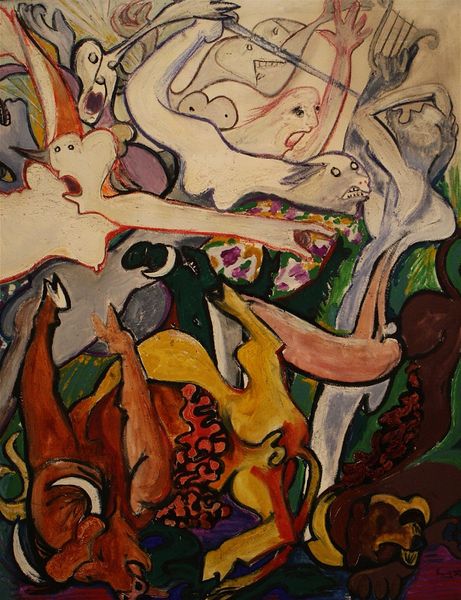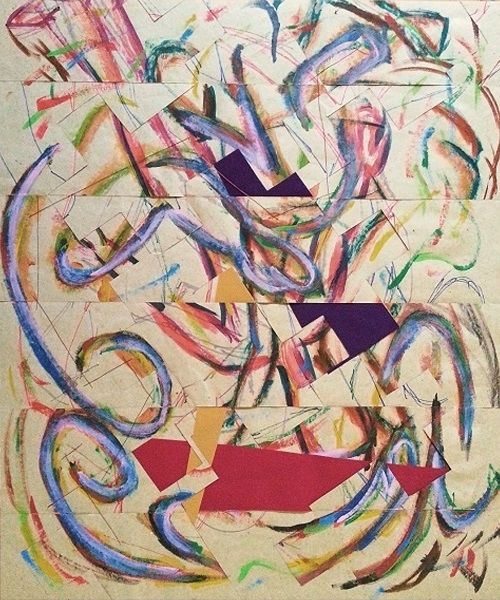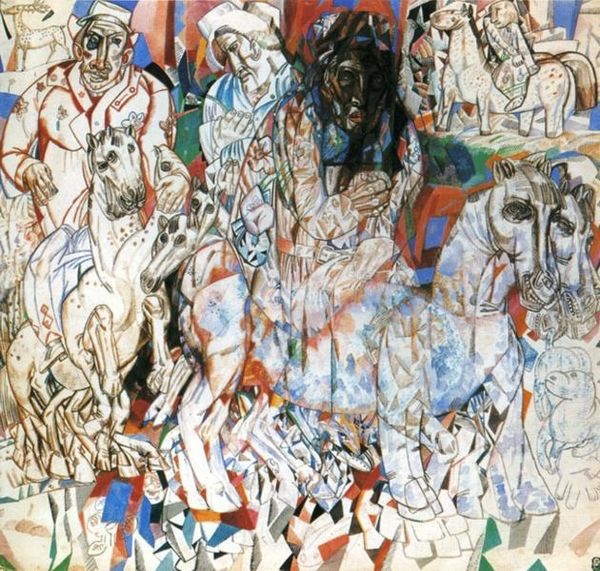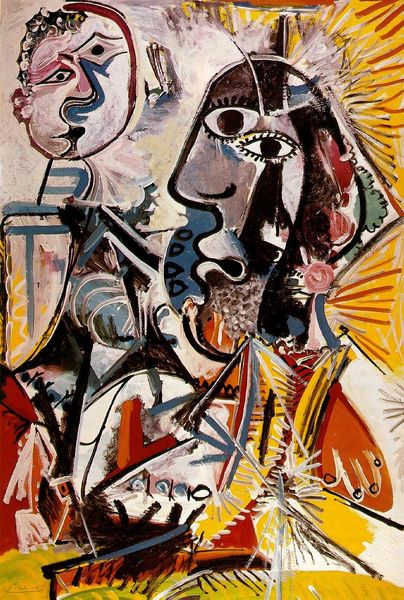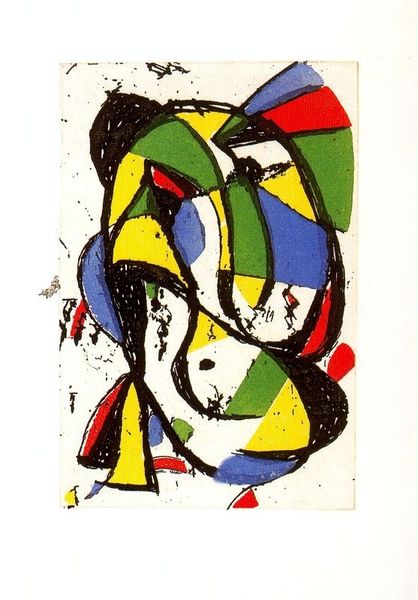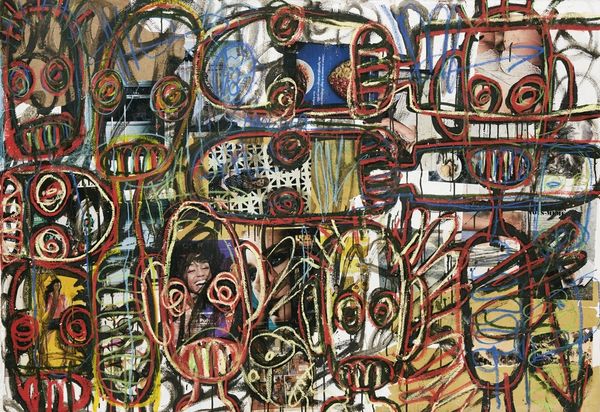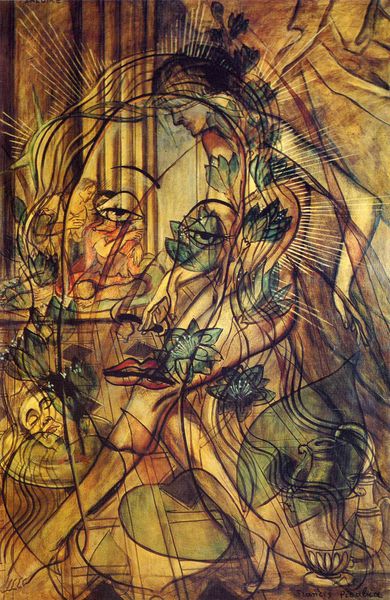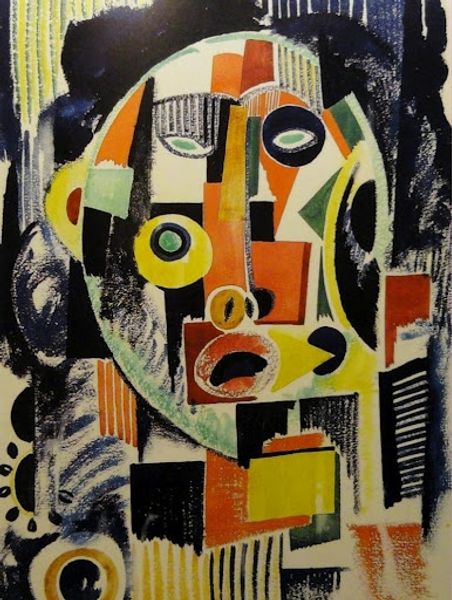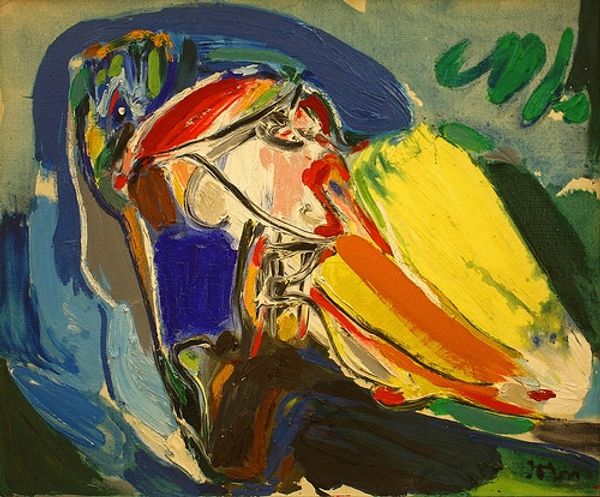
tempera, painting
#
portrait
#
abstract painting
#
tempera
#
painting
#
figuration
#
form
#
handmade artwork painting
#
acrylic on canvas
#
expressionism
#
abstraction
#
line
#
russian-avant-garde
#
painting art
#
modernism
Dimensions: 44.3 x 42.5 cm
Copyright: Public domain
Editor: This is Pavel Filonov’s “Heads,” made in 1924, using tempera. There's a lot happening—almost overwhelming in its complexity. It’s definitely not a traditional portrait. What can you tell me about it? Curator: The fascinating element here lies in Filonov’s chosen medium and method. Tempera, traditionally associated with icon painting and craft, elevates this artwork outside of established conventions. How does the choice of tempera on canvas impact our perception? Editor: I guess it flattens the image, makes it less about illusion and more about the materiality of the paint itself. Does the handmade feel connect to Russian folk art traditions, then? Curator: Precisely. This points to Filonov’s concern with ‘made’ quality of the work and connects this with popular art of his time, instead of Renaissance painting techniques that represent status and power. Editor: So, it's about democratizing the artistic process, challenging what art could be? Curator: Indeed. It rejects the high art/low art binary, reflecting a revolutionary fervor through artistic means. The details—the fractured forms, the intense layering—demonstrate incredible labor. This isn't a fleeting impression; it’s a deeply considered construction, a conscious 'making'. Editor: It makes me wonder about Filonov’s intended audience. Were these paintings meant for the elite, or for the everyday person? Curator: I suspect he envisioned art accessible to the masses, made with accessible means, a stark contrast to art patronized by the wealthy elite. This democratized vision, achieved through meticulous production processes, seems truly subversive. Editor: It's amazing how much you can learn about an artist's intentions by looking closely at their materials and techniques. I hadn't thought about tempera that way before.
Comments
No comments
Be the first to comment and join the conversation on the ultimate creative platform.
